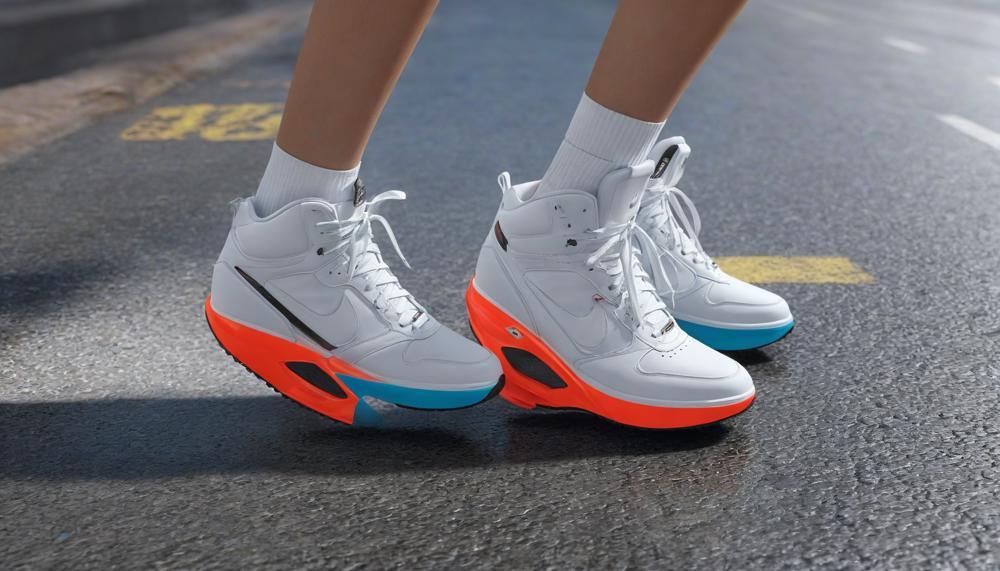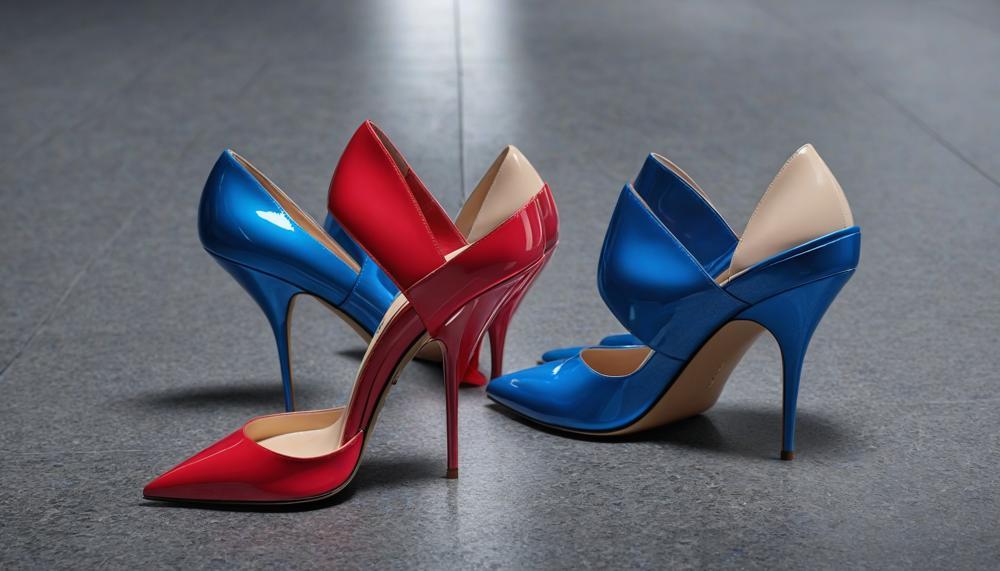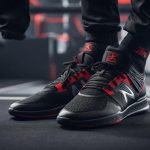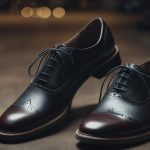Sliding feet in shoes is a common frustration for many, whether due to narrow feet, half-sizes that don’t quite fit, or simply owning a vast collection of shoes that vary slightly in size and shape. This issue isn’t just about discomfort; it can also pose a risk of blisters or even falls. Thankfully, there are several effective strategies that can help keep your feet firmly in place, enhancing both comfort and safety.
This post will guide you through various techniques and products designed to prevent your feet from sliding forward in your shoes.
From simple home remedies to store-bought solutions, you’ll discover multiple options that might require some trial and error to find your perfect fit. Let’s quickly highlight the key points to keep in mind:
- Absorb Moisture: Talcum powder can be used inside shoes to reduce moisture and prevent feet from slipping.
- Experiment with Inserts: Various insoles and inserts can provide better grip and fit.
- Consider Shoe Design: Some shoes are better suited for preventing slippage, particularly those with better arch support and snugger fits.
- Adjust Your Lacing Technique: Tightening or changing your lacing pattern can secure your foot more effectively.
Each method has its own merits, and combining them could lead to the best result. Stick around as we dive deeper into each option to help you walk more comfortably in your favorite pairs.
Best Products To Stop Feet From Sliding Forward In Heels
Contents
- 1 Best Products To Stop Feet From Sliding Forward In Heels
- 2 Prevent Sliding Feet With Ball Of Foot Cushion Inserts
- 3 Get Anti-Slip Insoles For High Heels
- 4 Got Sliding Insoles? Stop Them From Moving With Anti-Slip Shoe Tape
- 5 Wear Anti-Slip Toe Cover Socks
- 6 Use Callus Pads To Stop Your Feet From Sliding Forward
- 7 Are Your High Heels Too Big For Your Feet?
- 8 Summarized: How To Keep Feet From Sliding Forward In Heels
- 9 Conclusion
Among the variety of products available to halt the annoyance of feet sliding forward in heels, gel inserts and heel grips stand out for their effectiveness and affordability. These items not only help in keeping your feet in place but also enhance comfort, reducing the risk of blisters and discomfort associated with prolonged wear.
Gel inserts, typically made of soft silicone, excel in providing both cushioning for the balls of the feet and a better grip within slick shoe interiors. They are especially beneficial for those with narrow feet or those who find their shoes slightly oversized.
Heel grips also play a crucial role. By ensuring that your heel doesn’t slip out, these grips stabilize the foot, providing a snugger shoe fit and preventing the foot from sliding forward. This is particularly effective for shoes that might fit well in length but are a tad loose in the heel area.
For a more temporary and less visible solution, adhesive strips offer immediate grip enhancement without the need for inserts or pads. These can be especially useful for special occasions or for individuals who prefer not to alter the feel of their shoes too much.
Lastly, for those looking to address the issue directly at its source, anti-slip sprays provide an innovative solution. Applied directly to the foot, this spray reduces slippage within the shoe, a must-have for anyone whose feet tend to sweat, which can exacerbate slipping issues.
To ensure the best results, it’s wise to consider not only these products but also the style and fit of the heels themselves. Choosing shoes with ankle straps or T-straps can add additional security and comfort, further preventing any unwanted movement.
Prevent Sliding Feet With Ball Of Foot Cushion Inserts
Ball of foot cushion inserts are specialized pads designed to enhance comfort and prevent feet from sliding forward in shoes, especially high heels and slides. These inserts are typically placed in the forefoot area of the shoe, directly beneath the ball of the foot, which bears a significant portion of your weight when walking or standing.
These cushion inserts perform a dual role. Firstly, they provide a layer of soft, often gel-like material that offers significant cushioning. This reduces pressure and fatigue on the ball of the foot, a common complaint among heel wearers. Secondly, the material’s textural properties improve the shoe’s grip on the foot. This enhanced grip is crucial for preventing the foot from sliding forward, particularly in sleek-soled shoes like high heels.
The effectiveness of these inserts is further improved by designs like the metatarsal ridge or toe bar found in products like the Walkize Metatarsal Pads. This design feature helps to position the toes slightly, enhancing their natural ability to grip, which stabilizes the foot and prevents sliding.
Here’s a comparison of two popular products that illustrate how different features cater to the prevention of foot sliding:
| Product | Material | Design Feature |
| Dr. Scholl’s Ball of Foot Cushions | Soft gel-like material | Smooth, cushioning surface with grip |
| Walkize Metatarsal Pads | Soft material with ridge | Metatarsal ridge for toe positioning |
By fitting these inserts into your shoes, you not only enhance comfort but also significantly reduce the risk of your feet sliding, making your steps more stable and secure.
Get Anti-Slip Insoles For High Heels
Anti-slip insoles are a game-changer for those who don high heels, offering not just comfort but a firm stance against the slide. Let’s delve into how these clever companions help maintain your poise and elegance while you strut.
| Feature | Benefit | Description |
| Textured Grip | Stability | Prevents foot from sliding forward by increasing friction. |
| Adhesive Backing | Security | Keeps the insole in place, enhancing shoe fit and comfort. |
| Cushioning Material | Comfort | Reduces impact on the ball of the foot, mitigating pain. |
For anyone wading through a day or an event in high heels, slipping in a pair of anti-slip insoles can make a world of difference.
Got Sliding Insoles? Stop Them From Moving With Anti-Slip Shoe Tape
Anti-slip shoe tape acts as a dependable barrier between the insole and the shoe’s interior, providing a firm grip that counters the tendencies of insoles to slip during movement. This special tape is designed with a dual-sided adhesive: one side firmly attaches to the insole, while the other grips the interior surface of the shoe, anchoring the insole securely in place.
The effectiveness of anti-slip shoe tape lies in its ability to maintain contact and reduce movement through high-friction materials, which ensure that the insole remains flat and stable even during vigorous activities. This tape is not only practical but also versatile, suitable for various types of shoes and activities. Below is a table that illustrates the benefits of using anti-slip shoe tape compared to other methods:
| Method | Effectiveness | Application Ease |
| Anti-slip Shoe Tape | High | Simple |
| Sewing Insoles | Permanent | Complex |
| Proper Fit Alone | Variable | Depends on insole and shoe compatibility |
Using anti-slip tape not only enhances comfort by preventing the annoying shift of insoles but also contributes significantly to foot stability, reducing the risk of blisters and discomfort. This makes anti-slip tape an essential choice for anyone seeking an easy and reliable solution to secure sliding insoles.
Wear Anti-Slip Toe Cover Socks
Anti-slip toe cover socks are a key solution for anyone seeking enhanced foot stability and comfort while wearing shoes. Here’s a detailed look at their primary benefits:
- Enhanced Stability and Balance: These socks feature a grippy material on the sole and toe area, significantly improving traction. This is crucial in high heels or other slippery footwear where the feet might otherwise slide forward, leading to instability and discomfort.
- Prevention of Friction and Blisters: By preventing the foot from sliding forward, anti-slip toe cover socks minimize the friction between the foot and the shoe. This reduction in friction is especially beneficial in preventing blisters and irritation, making these socks ideal for active scenarios like sports or dancing.
- Improved Foot Health: The secure fit provided by these socks helps distribute weight evenly across the foot, alleviating strain on the toes and arches. This can be particularly advantageous for individuals suffering from foot conditions such as plantar fasciitis or flat feet.
- Increased Shoe Longevity: The reduction in constant foot movement within the shoe lessens wear and tear on the footwear, thus extending the life of your shoes.
- Overall Comfort and Security: Wearing anti-slip toe cover socks leads to a more comfortable and secure shoe fit, ensuring a better walking or running experience.

Use Callus Pads To Stop Your Feet From Sliding Forward
Callus pads work as a practical solution to keep your feet securely placed within your shoes, particularly addressing the problem of feet sliding forward. These smaller shoe inserts are strategically positioned at the toe area inside your shoes, specifically cushioning the ball of the foot.
By doing so, they serve a dual purpose. First, they provide a comfortable padding that reduces the impact on your feet as you walk, and second, they create a barrier that prevents the foot from moving too far forward.
This ensures better stability and fit, which is essential for both comfort and to avoid issues like toe cramps or blisters that can occur when the foot slides forward in a shoe.
Here’s a breakdown of how callus pads contribute to shoe comfort and foot stability:
| Feature | Benefit | Result |
| Cushioning | Softens impact on the ball of the foot | Reduces fatigue and discomfort during wear |
| Positioning | Targets the specific area prone to sliding | Prevents forward movement of the foot |
| Material | Non-slip texture grips inside the shoe | Enhances overall stability and fit |
These features highlight the role of callus pads in promoting a snugger, more secure fit, which is particularly useful in high-heeled shoes or sandals where sliding is more prevalent. They are an excellent choice for anyone looking to improve their shoe fit and increase comfort during prolonged wear.
Are Your High Heels Too Big For Your Feet?
To find out if your high heels are too big, look for telltale signs like your feet slipping out or excessive space at the heel. To confirm, do a “finger test”: slide a finger between the heel of your foot and the back of the shoe. If you can fit your finger easily, the shoe is likely too large. Additionally, if you notice your foot sliding forward, leaving a gap at the back, consider a smaller size or add heel grips to improve the fit.
Wearing high heels that don’t fit properly can lead to more than just discomfort. Ill-fitting shoes may cause foot ailments like blisters, calluses, and could alter your natural walking stride. This misalignment can extend beyond your feet, potentially affecting your posture and causing pain in your legs and back.
To ensure a better fit, you might consider these options, detailed below in the table, which provides simple solutions to adjust the fit of your high heels.
| Adjustment Option | Description | When to Use |
| Insoles | Adds extra padding, reducing the shoe size slightly and providing more grip. | For moderate space in the shoe or to improve comfort. |
| Heel Grips | Sticky pads that attach to the inside of the heel area to prevent slipping. | If heel slipping occurs or if there’s minor space at the back of the shoe. |
| Padding/Heel Strips | Strips placed inside the shoe to provide cushioning and a tighter fit. | For front or side spaces that cause foot sliding. |
If these DIY adjustments don’t help, seeking professional alteration might be necessary. Remember, prioritizing a snug, but comfortable fit is crucial to preventing long-term foot problems and ensuring you can wear your favourite high heels without a hitch. For more detailed advice on shoe fit and care, consider visiting a specialist shoe store or a podiatrist.
Summarized: How To Keep Feet From Sliding Forward In Heels
Keeping your feet from sliding forward in heels can be tackled with a few practical solutions. Here are several proven methods:
- Heel Grips or Cushions: These are adhesive pads that fit inside your heel. They not only provide extra grip but also cushion your foot, reducing slippage particularly in open-toe shoes or sandals.
- Gel Inserts: Placing gel inserts at the ball of the foot offers additional grip and cushioning. They are available in various shapes to suit different shoe styles and foot sizes.
- Proper Shoe Fit: Ensuring your heels fit well is crucial. Shoes that are too loose can cause your foot to slide. If a shoe is slightly large, heel grips or gel inserts can help improve the fit.
- Double-Sided Tape: For a quick fix, a piece of double-sided tape placed inside the shoe at the ball of the foot can provide temporary grip.
- Foot Strengthening Exercises: Exercises like toe curls, foot stretches, and calf raises can strengthen foot muscles, improving your ability to control shoe movement and prevent sliding.
Conclusion
Slipping feet in shoes can turn a stylish stride into a precarious shuffle. To combat this, a few well-chosen strategies and products can transform your footwear experience from slippery to secure. Talcum powder offers a quick fix by reducing moisture within the shoe, while the right inserts and insoles bring stability and comfort, ensuring your feet stay where they should. Adjusting your lacing technique can also offer immediate benefits, providing a tighter fit that cradles the foot more effectively.
In the quest for the perfect slip-free shoe experience, consider both the design of the footwear and the aids you employ. Products like gel inserts and heel grips target the problem with precision, offering a buffer against sliding by filling unwanted space and providing a sticky surface that keeps feet anchored. For those seeking a less intrusive option, adhesive strips provide a subtle yet effective solution, adhering directly to the inside of the shoe.
To ensure every step is secure, match these solutions to your specific needs. Whether it’s a spray that increases traction or a strategic pad that cushions and grips, the right combination can make all the difference.






